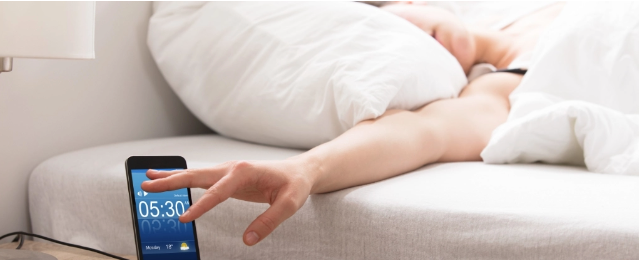||| FROM SCIENCE ALERT |||
As people in the US prepare to set their clocks ahead one hour on Sunday, March 12, 2023, I find myself bracing for the annual ritual of media stories about the disruptions to daily routines caused by switching from standard time to daylight saving time.
About one-third of Americans say they don’t look forward to these twice-yearly time changes. And nearly two-thirds would like to eliminate them completely, compared to 21 percent who aren’t sure and 16 percent who would like to keep moving their clocks back and forth.
But the effects go beyond simple inconvenience. Researchers are discovering that “springing ahead” each March is connected with serious negative health effects, including an uptick in heart attacks and teen sleep deprivation.
In contrast, the fall transition back to standard time is not associated with these health effects, as my co-authors and I noted in a 2020 commentary.
I’ve studied the pros and cons of these twice-annual rituals for more than five years as a professor of neurology and pediatrics and the director of Vanderbilt University Medical Center’s sleep division.
It’s become clear to me and many of my colleagues that the transition to daylight saving time each spring affects health immediately after the clock change and also for the nearly eight months that Americans remain on daylight saving time.
The strong case for permanent standard time
Americans are split on whether they prefer permanent daylight saving time or permanent standard time.
However, the two time shifts – jolting as they may be – are not equal. Standard time most closely approximates natural light, with the Sun directly overhead at or near noon.
In contrast, during daylight saving time from March until November, the clock change resulting from daylight saving time causes natural light to be present one hour later in the morning and one hour later in the evening according to clock time.
Morning light is essential for helping to set the body’s natural rhythms: It wakes us up and improves alertness. Morning light also boosts mood – light boxes simulating natural light are prescribed for morning use to treat seasonal affective disorder.
Although the exact reasons why light activates us and benefits our mood are not yet known, this may be due to light’s effects on increasing levels of cortisol, a hormone that modulates the stress response or the effect of light on the amygdala, a part of the brain involved in emotions.
Adolescents also may be chronically sleep deprived due to school, sports, and social activities. For instance, many children start school around 8 am or earlier. This means that during daylight saving time, many young people get up and travel to school in pitch darkness.
The body of evidence makes a good case for adopting permanent standard time nationwide, as I testified at a March 2022 Congressional hearing and argued in a recent position statement for the Sleep Research Society.
The American Medical Association recently called for permanent standard time. And in late 2022, Mexico adopted permanent standard time, citing benefits to health, productivity and energy savings.
The biggest advantage of daylight saving time is that it provides an extra hour of light in the late afternoon or evening, depending on time of year, for sports, shopping or eating outside.
However, exposure to light later into the evening for almost eight months during daylight saving time comes at a price. This extended evening light delays the brain’s release of melatonin, the hormone that promotes drowsiness, which in turn interferes with sleep and causes us to sleep less overall.
Because puberty also causes melatonin to be released later at night, meaning that teenagers have a delay in the natural signal that helps them fall asleep, adolescents are particularly susceptible to sleep problems from the extended evening light. This shift in melatonin during puberty lasts into our 20s.
The ‘western edge’ effect
Geography can also make a difference in how daylight saving time affects people. One study showed that people living on the western edge of a time zone, who get light later in the morning and later in the evening, got less sleep than their counterparts on the eastern edge of a time zone.
This study found that western-edge residents had higher rates of obesity, diabetes, heart disease and breast cancer, as well as lower per capita income and higher health care costs. Other research has found that rates of certain other cancers are higher on the western edge of a time zone.
Scientists believe that these health problems may result from a combination of chronic sleep deprivation and “circadian misalignment.” Circadian misalignment refers to a mismatch in timing between our biological rhythms and the outside world. In other words, the timing of daily work, school or sleep routines is based on the clock, rather than on the Sun’s rise and set.
**If you are reading theOrcasonian for free, thank your fellow islanders. If you would like to support theOrcasonian CLICK HERE to set your modestly-priced, voluntary subscription. Otherwise, no worries; we’re happy to share with you.**









Very interesting. Thank you for this information.
I don’t care one way or the other whether DST or Standard Time is the designated time but the US needs to PICK ONE and stick with it. If schools are starting in the darkness in the winter at higher latitudes, then CHANGE THE SCHOOL STARTING TIME! Why the entire country has to go through gyrations twice a year for some debatable benefit to some people in some places is nonsensical.
What Ken said: I totally agree. Pick one, and then leave the clocks alone!
For the record, I myself strongly favor leaving the clocks on Standard Time.
Life on ST gets dark earlier, compared to the clock, and gets light earlier (compared to the clock) than Daylight time.